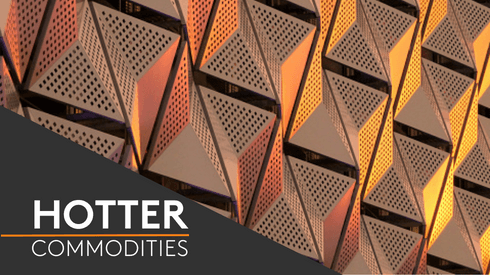The tactic over the past five years of investing in what China has been buying has reversed, as a lack of investment in the commodities China did not buy will push these prices higher, Tony Robson, md and co-head of global mining research at BMO Capital Markets, told Metal Bulletin.
“Over the past five years investors have been running with the thesis ‘buy what China buys and what they import’, which included coal, iron ore, copper and oil. This has led to high prices, which has encouraged capital investment in those commodities,” Robson said in an interview during LME Week.
“But that thesis is changing to ‘buy what China did not buy’, where we have seen low prices for the last five to ten years, meaning that they have had lower capital investment,” he said.
This lack of capital investment for commodities such as nickel and zinc has now meant that the supply outlook is much tighter, he said. This will lead to higher prices going forward, he added.
“Zinc has been an interesting metal where we are certainly seeing the end of life for the major mines that came on stream 10-20 years ago. This has been a commodity that has been starved of capital,” Robson said.
And on nickel, the emergence of Chinese pig nickel has depressed returns for nickel miners over the last five years, meaning there has been little investment in new nickel mine supply, he added.
Whereas for commodities such as copper, strong demand driven by the growth in China has led to overinvestment and oversupply.
“Copper is one of those commodities that had a lot of air play and a lot of capital. We do see a slight oversupply for the next three years on copper. But we agree with most of the major players that copper will end up in a structural deficit,” he added.
But overall, the outlook for most base metals is fairly strong, Robson said.
“Aluminium is up year-to-date and since late last year there have been stronger regional premiums. Zinc is looking good, and BMO is modestly optimistic on that. Nickel is potentially explosive in terms of its price, especially if we see stockpiled nickel ore being consumed by November from China,” he said, adding that lead as a by-product of zinc is also likely to benefit from the lack of investment in the sector.
But, in the short term, this stronger outlook will not help the mining sector outperform equity markets, he said.
“[They won’t outperform] this year or in the first half of next year. But bear markets in metals don’t last forever because of the lack of investment in the industry. A lot of the LME base metals are already looking interesting,” he said.
In terms of the top picks of mining companies, Robson advocated investing in the more stable and stronger companies such as Glencore, Rio Tinto and BHP Billiton. These companies have solid profit margins, growth, and a focus on sensible investments as well as returning capital to shareholders, he said.
And Boliden could be a good company to invest in to benefit from the bullish outlook for zinc. But the lack of investment in the metal means there are not many large companies that are pure zinc plays, he added.
“On zinc, as with nickel, because of the lack of investment for many years, it is hard for equity investors to get access to it in terms of listed mining companies,” Robson said.
Chloe Smith
chloe.smith@metalbulletin.com
Twitter: ChloeSmith_MB





